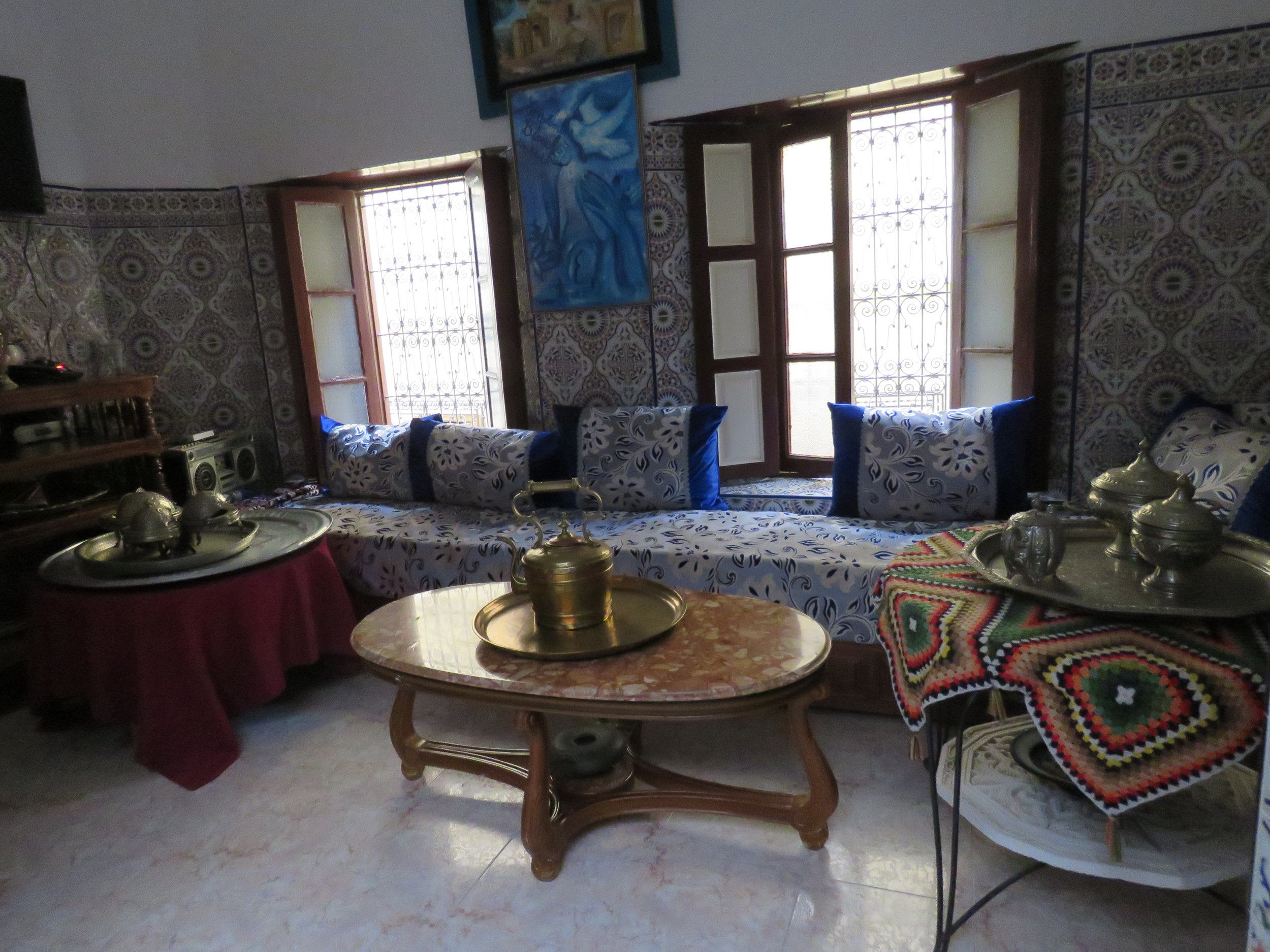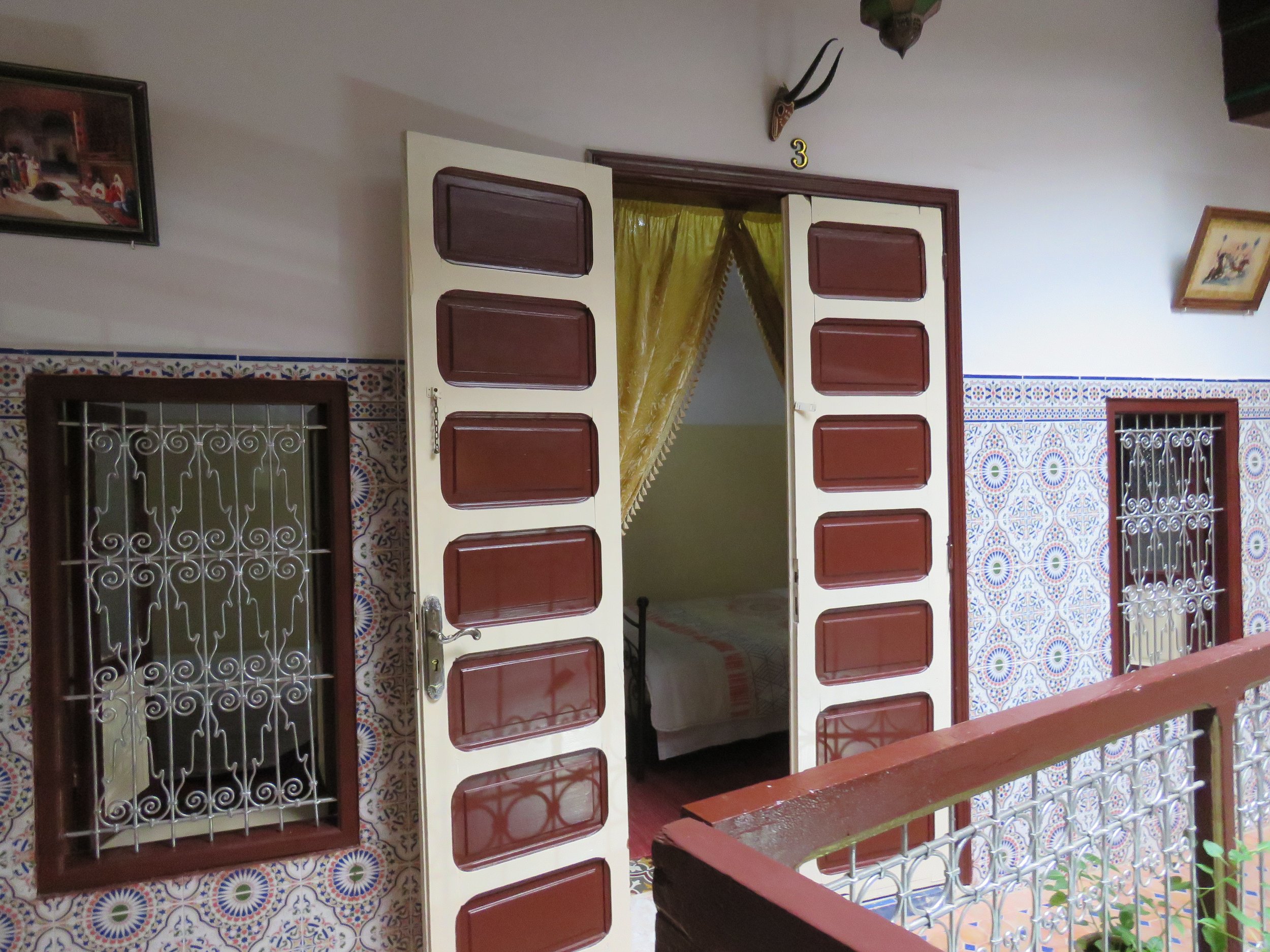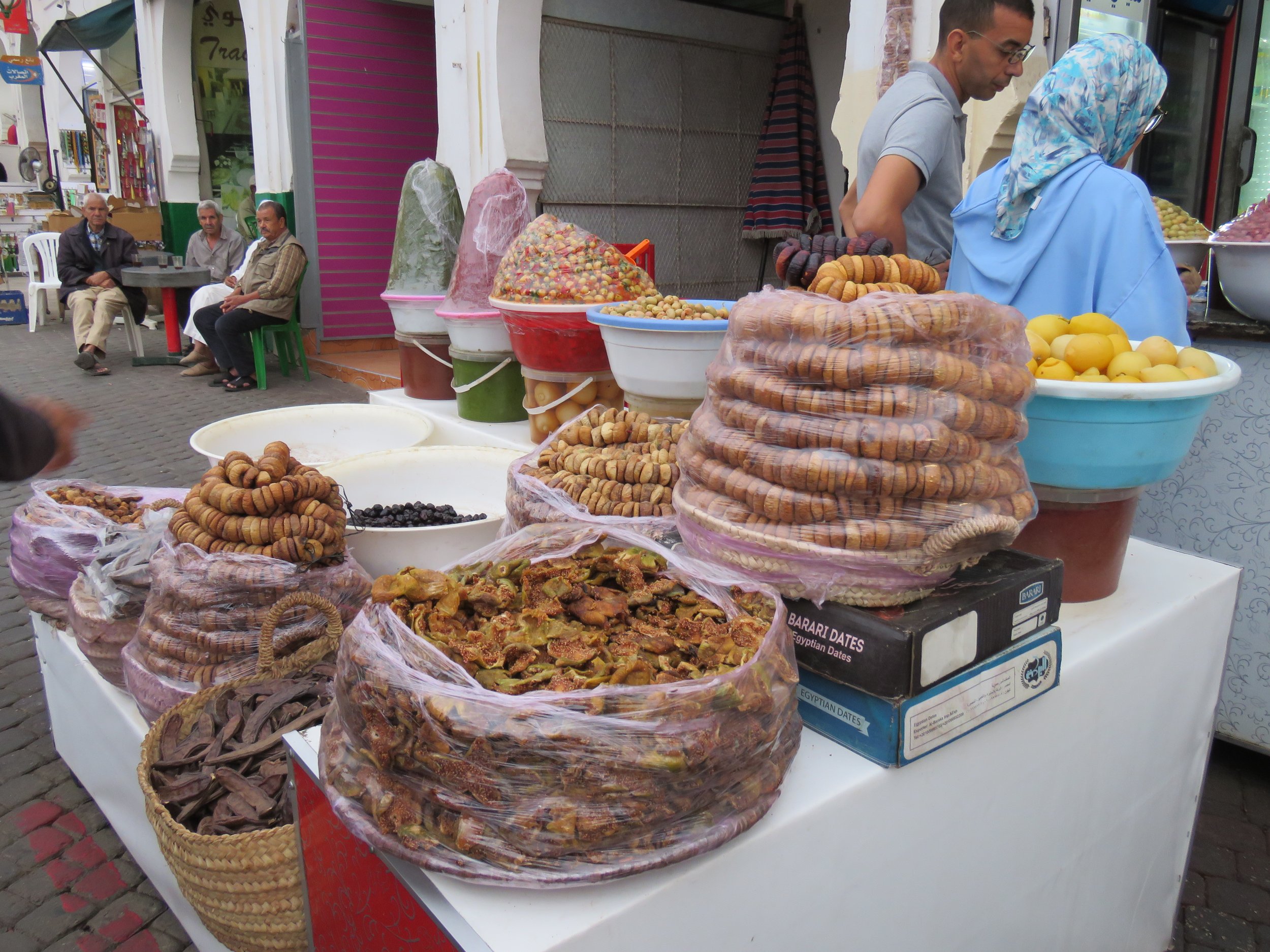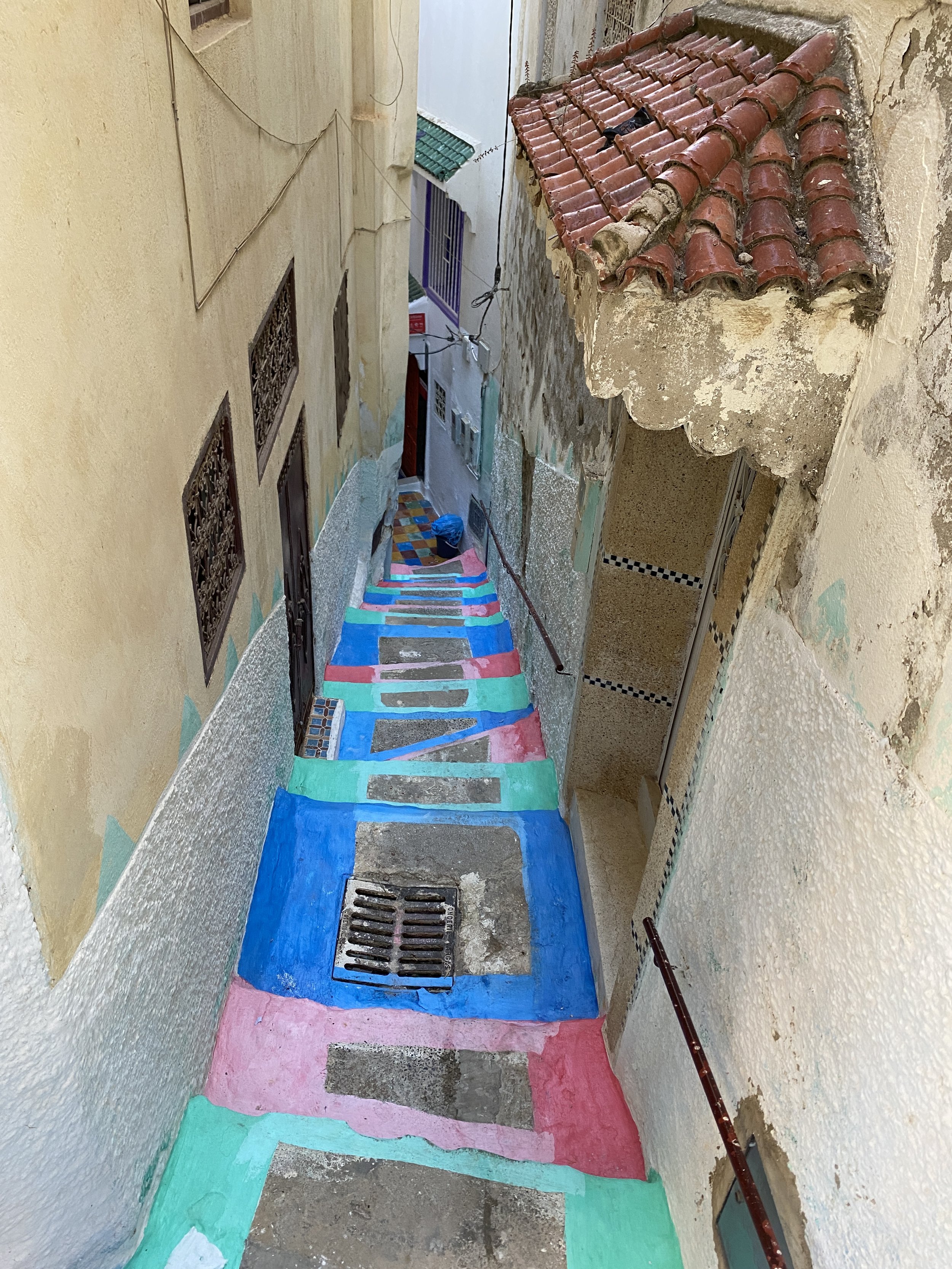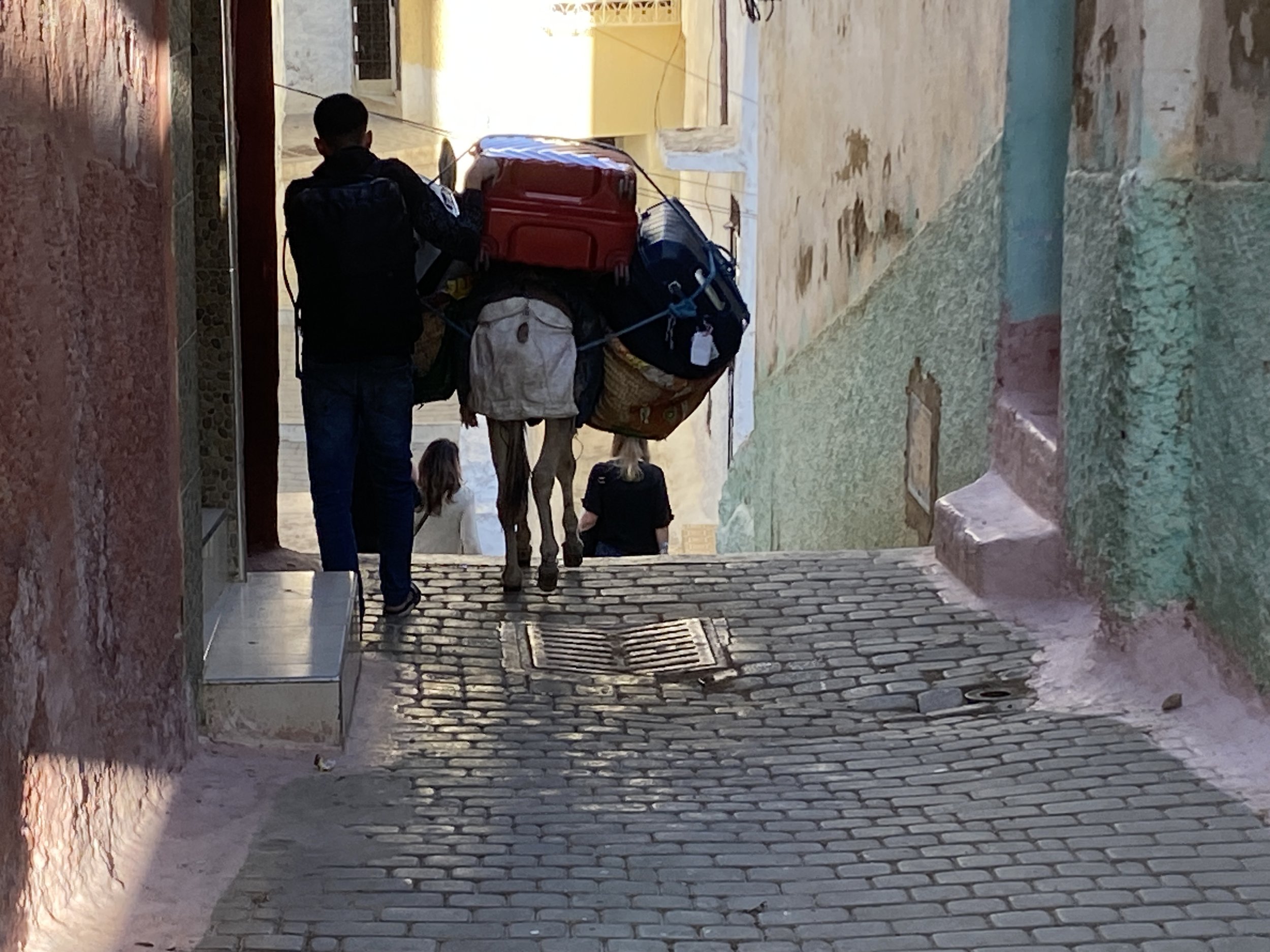““Those who travel because of a book they’ve read are not ordinary travelers.”
”
Following our walk through the medina of Rabat, the capital city of the kingdom Morocco in northern Africa, we boarded a little bus that took us to the hilly countryside to a tiny village.
The sacred village of Moulay Idriss is a gorgeous town draped on top of a small mountain - slightly dripping down like a dollop of whipped cream on top of a bowl of ice cream.
The ornate entrance to the mausoleum.
For Muslims, this is the holiest place in Morocco. In fact, we were told that five visits to Moulay Idriss equal one trip to Mecca. So if one is unable to travel to Mecca, this is a good alternative. The faithful gather here at the tomb of Moulay Idriss – the great-grandson of Mohammed, who brought Islam to Morocco.
For non-Muslims this is also a special place to visit. The medina of this ancient town teems with life at night when everyone seems to come out to visit, to stroll and to eat. I enjoyed kicking a football with local kids, we bought freshly roasted nuts and admired the baskets full of spices. We strolled around the square, checked out the small, unassuming town marvelling at its history.
Soccer rules the lives of many kids around the world!
But the highlight of the steep, mountaintop village, was staying in a riad. Traditionally, a riad is a large house with many bedrooms, often build in a square around an inner courtyard. These houses were often the homes of wealthy traders. Nowadays they make fantastic small hotels. Most are owned by an individual family so it feels a bit like a home stay. The sons handle the guests, their questions, their luggage. The women cook all day.
Our riad in Moulay Idriss
I called him Samsonite..
Our little van dropped us off at the ancient city wall where donkeys stood waiting. Hanna and I decided to haul our own luggage up the steep alleyways to the riad but others made use of the donkey luggage service. Several suitcases were strapped to their saddles and up they clambered!
It was a steep climb but we made it and loved seeing the riad - worn by travellers and rich with stories. The family made us a traditional dinner: chicken and vegetables in a typical Moroccan tagine. This large earthenware dish has a conical lid. Potatoes, beans, carrots and more are steamed inside, often with chicken or lamb.
Sleeping in such an ancient city is always wonderful because there is no traffic. It’s so quiet and peaceful.
In the morning we walked down, down, down alongside the donkeys - to our waiting van to visit a nearby Roman site: Volubilis – once one of the Roman empire's most remote bases. Like Moulay Idriss, this is a UNESCO World Heritage-listed site.
The Mauritanian capital of Volubilis, founded in the 3rd century B.C., became an important outpost of the Roman Empire and was a sprawling city with many large buildings. Extensive remains of these survive in the archaeological site you can visit today. Volubilis later became the capital of Idris I, founder of the Idrisid dynasty, who is buried at nearby Moulay Idris.
The archaeological site has many Roman arches and pillars. We strolled around in the heat, marvelling at the history of it all, until it was time to continue our journey to Meknes. Stay tuned!
Street scenes of Moulay Idriss:








